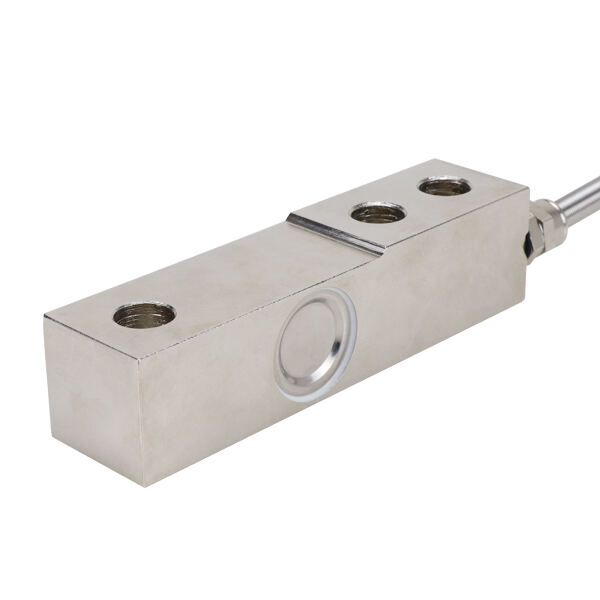How to Select a Load Cell for Industrial Weighing?
Industrial weighing systems are essential for ensuring accuracy, efficiency, and consistency across multiple sectors, from manufacturing to logistics, agriculture, food processing, and more. At the heart of these systems lies a crucial component: the Load Cell. This small but powerful device converts mechanical force into an electrical signal, making it possible to measure weight with exceptional precision.
Selecting the right Load Cell is not a one-size-fits-all process. Different applications demand different specifications, and making the wrong choice can lead to inaccuracies, system failures, and costly downtime. This guide provides a detailed explanation of what a Load Cell is, how it works, the various types available, the factors to consider when selecting one, and tips for ensuring optimal performance in industrial weighing applications.
Understanding What a Load Cell Is
A Load Cell is a transducer that converts force or weight into an electrical output. In simple terms, it’s a device that senses how much something weighs by detecting the amount of force exerted on it. This force is typically converted into a change in electrical resistance, voltage, or frequency, depending on the sensor’s design.
Load Cells are a cornerstone of modern weighing systems and are used in everything from small bench scales to large industrial weighbridges. Their ability to provide accurate, repeatable measurements makes them indispensable in quality control, production monitoring, and inventory management.
How a Load Cell Works

Most Load Cells operate on the principle of strain gauge technology. A strain gauge is a sensor that changes its electrical resistance when it is stretched or compressed. Here’s a simplified breakdown of the process:
Force Application: When a weight is placed on the Load Cell, it causes a deformation (stretching or compressing) in the material of the sensor.
Strain Gauge Response: The strain gauge bonded to the Load Cell deforms along with the material, altering its electrical resistance.
Signal Conversion: This resistance change is converted into an electrical signal.
Amplification and Processing: The signal is amplified and processed by a readout device or control system, displaying the weight or force applied.
While strain gauge Load Cells are the most common, other technologies such as hydraulic, pneumatic, and capacitive sensing are also used in specific applications.
Types of Load Cells for Industrial Weighing
Compression Load Cell
Measures the force applied in a single direction — compression. Commonly used in truck scales, industrial hoppers, and silo weighing systems.
Tension Load Cell
Designed to measure pulling forces, often used in crane scales, tensile testing machines, and suspended weighing systems.
Shear Beam Load Cell
Ideal for platform scales and conveyor belt systems, these measure bending forces and provide high accuracy in heavy-duty applications.
Single-Point Load Cell
Compact and capable of handling off-center loads, making them perfect for smaller bench and retail scales.
S-Type Load Cell
Shaped like the letter “S,” these can measure both tension and compression, making them versatile for different industrial uses.
Canister Load Cell
Cylindrical in shape and robust in design, these are commonly used in high-capacity weighing such as in silos and tanks.

Key Factors to Consider When Selecting a Load Cell
Choosing the right Load Cell requires a careful analysis of your application’s requirements. Here are the most important factors:
1. Capacity Range
Select a Load Cell with a capacity that matches your maximum expected load, including any overloads. It’s recommended to have a margin above your maximum weight to prevent damage from occasional excess loads.
2. Accuracy Requirements
Consider the precision needed for your operation. Laboratory-grade applications demand higher accuracy classes, while bulk material weighing may allow for slightly lower precision.
3. Environmental Conditions
Factors such as temperature fluctuations, humidity, dust, and exposure to chemicals can affect Load Cell performance. Choose one with the appropriate ingress protection (IP) rating and environmental sealing.
4. Load Type
Determine whether you are measuring tension, compression, or both, as this dictates which Load Cell type is most suitable.
5. Size and Mounting Requirements
Ensure that the Load Cell fits into your weighing system’s available space and supports the required mounting configuration.
6. Output Signal
Load Cells produce either analog or digital signals. Digital Load Cells offer better noise immunity and easier calibration but may require compatible electronics.
7. Material and Construction
Stainless steel Load Cells offer superior corrosion resistance for food, marine, or chemical environments, while aluminum models may be sufficient for indoor, low-moisture applications.
8. Legal and Regulatory Compliance
If your weighing system is used for commercial transactions, ensure the Load Cell meets local legal-for-trade standards and certifications.
Application Examples of Load Cells in Industry
Manufacturing Quality Control
In production lines, Load Cells ensure each product meets weight specifications, helping maintain quality standards and reducing waste.
Logistics and Shipping
Truck scales and conveyor belt weighing systems rely on Load Cells for accurate cargo measurements, avoiding overloading and ensuring compliance with transport regulations.
Agriculture
Grain silos and feed hoppers use Load Cells to track inventory levels and manage supply chains efficiently.
Food and Beverage Industry
Hygienic Load Cells with high IP ratings are used in processing plants to weigh ingredients and finished products under strict sanitary conditions.
Mining and Quarrying
Heavy-duty Load Cells handle extreme loads in weighing bulk materials such as ore, gravel, or coal.
Common Mistakes to Avoid When Choosing a Load Cell
Underestimating Capacity Needs: This can lead to overloading and damage.
Ignoring Environmental Factors: Moisture, dust, and temperature extremes can cause premature failure.
Selecting the Wrong Type: A mismatch between the Load Cell type and the load direction can result in inaccurate readings.
Neglecting Calibration: Even the best Load Cell needs proper calibration to perform optimally.
Installation and Maintenance Tips for Load Cells
Ensure the mounting surface is flat and stable to avoid stress on the Load Cell.
Use proper mounting hardware as recommended by the manufacturer.
Protect cables from physical damage and interference.
Periodically check calibration to maintain accuracy.
Keep Load Cells clean, especially in industries with food, dust, or moisture exposure.
Advances in Load Cell Technology
Digital Load Cells
These incorporate electronics that process the signal internally, reducing noise and making integration with control systems easier.
Wireless Load Cells
Ideal for applications where wiring is impractical, such as rotating machinery or mobile platforms.
Miniature Load Cells
Designed for applications where space is limited but precision is still necessary, such as in medical devices or robotics.
Smart Load Cells
These include onboard diagnostics and self-calibration capabilities, improving reliability and reducing downtime.
The Future of Industrial Weighing with Load Cells
With the rise of Industry 4.0 and IoT-enabled systems, Load Cells are becoming more integrated into connected, data-driven environments. Predictive maintenance, real-time monitoring, and automated quality control processes are transforming how industrial weighing systems operate.
In the coming years, expect to see Load Cells with even higher accuracy, enhanced durability for extreme environments, and seamless integration into smart factory ecosystems.
FAQ
What is a Load Cell used for?
It is used to measure force or weight by converting mechanical force into an electrical signal for monitoring and control.
How do I choose the right Load Cell capacity?
Choose a capacity slightly higher than your maximum expected load, factoring in possible overloads.
Can Load Cells work in harsh environments?
Yes, but you must select models with appropriate sealing, corrosion resistance, and environmental ratings.
What is the difference between analog and digital Load Cells?
Analog Load Cells output a voltage or current signal that requires external processing, while digital Load Cells process the signal internally for improved accuracy and noise resistance.
How often should Load Cells be calibrated?
Calibration frequency depends on usage, environment, and regulatory requirements, but regular checks are recommended to maintain accuracy.
Can a single Load Cell measure both tension and compression?
Yes, certain designs like S-type Load Cells can measure both.
Are wireless Load Cells reliable?
Yes, modern wireless Load Cells offer high reliability, but they require proper configuration and battery management.
Table of Contents
- How to Select a Load Cell for Industrial Weighing?
- Understanding What a Load Cell Is
- How a Load Cell Works
- Types of Load Cells for Industrial Weighing
- Key Factors to Consider When Selecting a Load Cell
- Application Examples of Load Cells in Industry
- Common Mistakes to Avoid When Choosing a Load Cell
- Installation and Maintenance Tips for Load Cells
- Advances in Load Cell Technology
- The Future of Industrial Weighing with Load Cells
-
FAQ
- What is a Load Cell used for?
- How do I choose the right Load Cell capacity?
- Can Load Cells work in harsh environments?
- What is the difference between analog and digital Load Cells?
- How often should Load Cells be calibrated?
- Can a single Load Cell measure both tension and compression?
- Are wireless Load Cells reliable?
